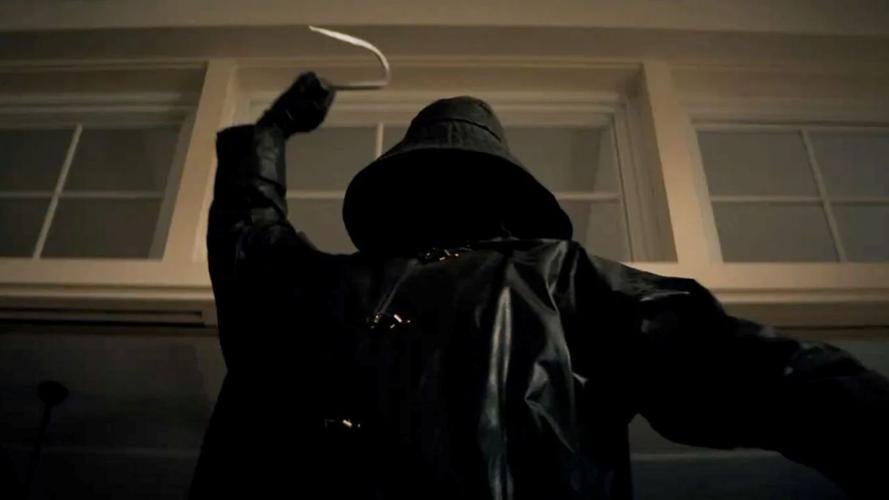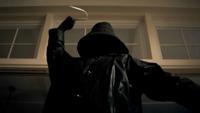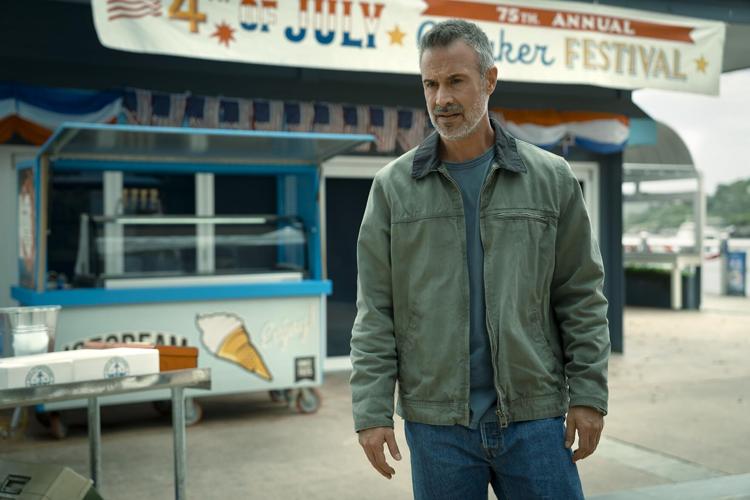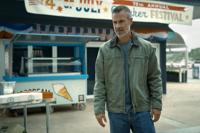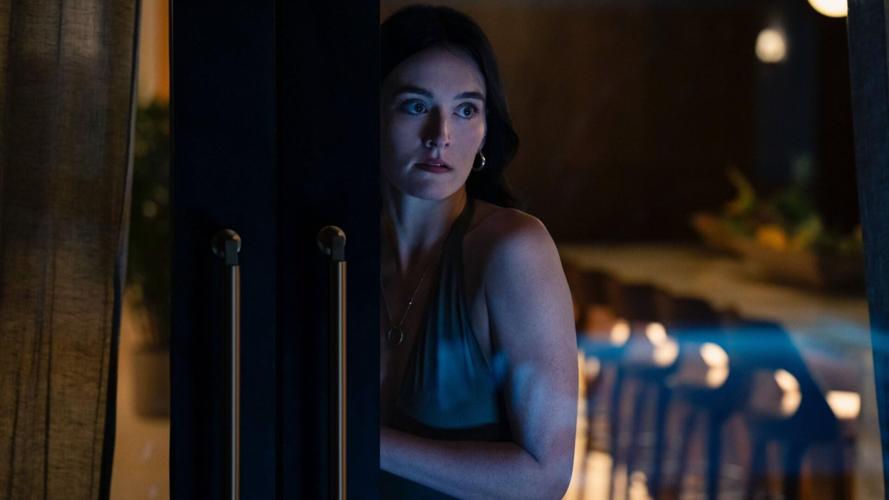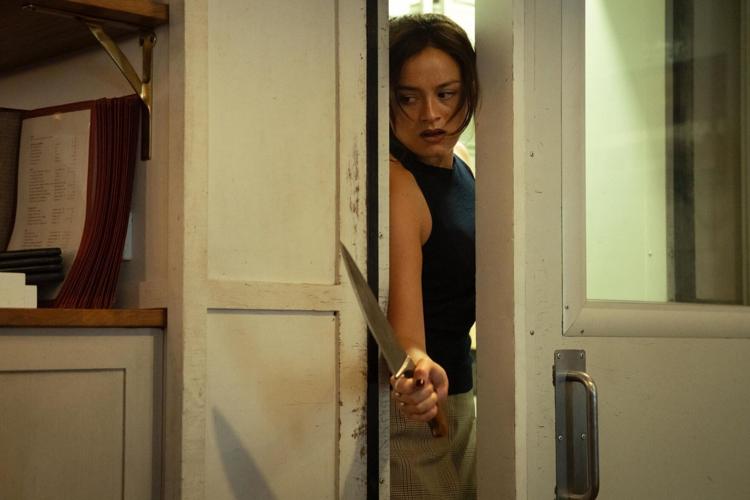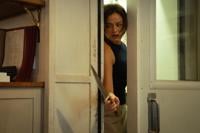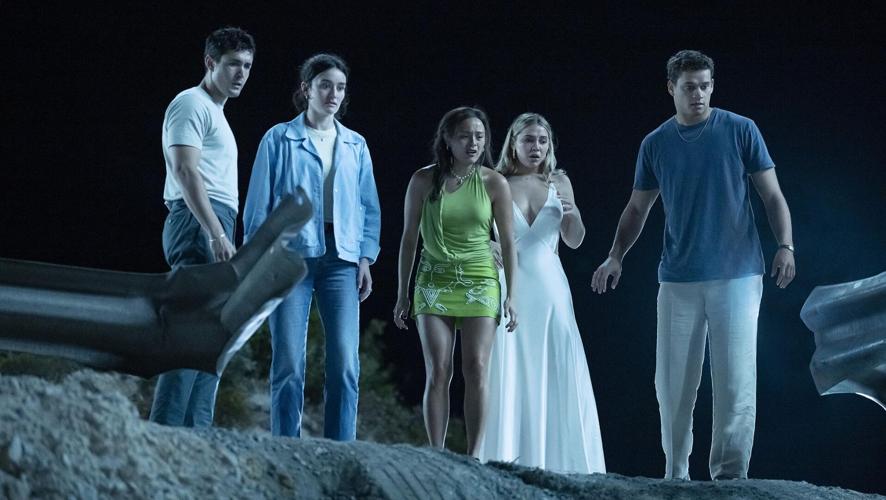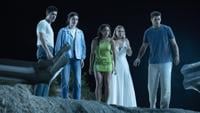This is the third theatrical film based on the novel of the same name. The 1997 feature was a huge box office success. It was number-one for three weeks in October of that year. It had the highest weekend debut for any slasher. It made more than seven-times its budget. The screenplay came from Kevin Williamson who had written another smash hit the year prior, that of Scream (1996), a film that created a new icon in Ghostface who is now on the level of Michael Myers or Jason Voorhees. The serial killer in the 1997 film was a man dressed as a fisherman with a dark slicker and a fish hook as his weapon. After that flick, the fisherman killer never really caught on. The sequel I Still Know What You Did Last Summer (1998) cost a little more but made less money in the box office, a third less, which rather killed the momentum of the franchise. Like Halloween (1978) or even like Scream, this film is getting revisited decades later with a new, fresh set of actors but also the original cast members there as legacy.
Jennifer Love Hewitt (9-1-1 and Party of Five) reprises her role of Julie James. Julie is currently a college professor who teaches psychology, specifically about the effects of trauma. 30 years ago, she was a high school graduate who survived the 1997 Southport massacre. She no longer lives in Southport. The college where she teaches is about an hour away. She seemingly lives a quiet life and a very secure one. Her home is protected with cameras that she can monitor on her phone and an alarm that is also a motion detector. She's vowed never to go back to Southport because of the bad memories from the massacre.

Freddie Prinze Jr. (Star Wars Rebels and She's All That) reprises his role of Ray Bronson. Ray owns and runs a bar in Southport. He used to be in a relationship with Julie. They used to be married. However, they broke up because of the ways that they dealt with the trauma of the 1997 Southport massacre. Ray wanted to stay in town and preserve whatever legacy he thought the town should have. He wanted in various ways to keep the memory of what happened alive, whereas Julie wanted to bury it and never think about it again. Since Southport has been gentrified or redeveloped, catering more to wealthy people who want to live there, Ray feels as if he and the town he used to know are being erased. Julie left town, so she doesn't care if the town is redeveloped, but Ray does care.
Unfortunately, this film, directed and co-written by Jennifer Kaytin Robinson, doesn't more deeply explore that aspect and difference between Julie and Ray. The original film underlined the socioeconomic differences between Julie and Ray to one degree or another. Here, the socioeconomic differences are rather brushed over. It's not just Julie and Ray, but the economics and specifically class issues between the main younger characters are rather brushed over as well. In fact, the conflict here is about social class, the haves versus the have-nots, the privileged versus the poor. Again, Robinson's script doesn't delve much into that conflict. At least, it doesn't do so in a way that's balanced. Most of this film is reveling in the wealth and opulent homes of the majority of the younger characters. Yes, this is a slasher film, so a lot of the slayings occur in these wealthy and opulent homes, which the amount of blood spill we see in luxury could be commentary in and of itself, but I felt a counterbalance was needed. The 1997 film had that counterbalance in Ray, but here his proxy is rather muted.

Sarah Pidgeon (Tiny Beautiful Things and The Wilds) plays Stevie Ward, an employee at Ray's bar. She's the equivalent of Ray Bronson. Of the main characters, she's the most poor. In the 1997 feature, there were four young people. Three of them came from wealthy or privileged backgrounds. One of them wasn't. That poor or working-class kid was Ray. Here, there are five young people and one of them is the only one to come from an impoverished or working-class background. Stevie is that working-class person. When she's first introduced, she has a bit of dialogue that runs down her struggles, but, as stated, the rest of the film has her rather muted on her struggles and her life in general. With the extra number of characters here, there's simply not enough time to get to know her and allow us to empathize with her struggles.
Another thing that this film doesn't have time to develop is the victim that starts the dominoes falling. The premise is that one night, on July 4th, a group of young people drive a winding road. As a result of some negligent or careless actions, there's a car accident that ends up killing a man. The young people decide to cover up their involvement because they feel their negligence or carelessness will land them in prison, which would ruin their lives. One year later, a man dressed as a fisherman appears in town and starts brutally murdering the young people one by one. The fisherman's killing spree is kicked off by him sending a threatening note to his first victim.

Madelyn Cline (Glass Onion: A Knives Out Mystery and Outer Banks) plays Danica Richards, a privileged and pampered princess living in Southport. She's a beauty queen who likely comes from a wealthy or influential family. She's the equivalent of Helen Shivers, played by Sarah Michelle Gellar (Cruel Intentions and Buffy the Vampire Slayer). The difference is that the 1997 feature did a better job of filling out the character of Helen and how the death of a man affected her. This film barely gives space for Danica's character beyond the superficial. Her grief is later played for laughs or comedy, which is not that far from Williamson's 1997 script, which might not have been perfect but it did have the pathos that this film lacks. When Helen died in the 1997 film, there was genuine pathos, which made it all the more thrilling and heartbreaking.
None of the deaths or kills here have that kind of thrill or heartbreak. Many of them feel perfunctory. The staging or choreography of the death scenes aren't even that interesting. For example, in the 1997 film, the character of Barry Cox, played by Ryan Phillippe (Crash and Cruel Intentions), was attacked in a way that was very interesting. In a slasher flick, the killers tend to use small, handheld weapons, but the fisherman went after Barry in an enticing way that let you know what Barry's favorite piece of clothing was and culminated in the killer using a car as the ultimate weapon. It was a bold incredible moment. Nothing like that sequence exists in this film. The kills here are actually boring.

Chase Sui Wonders (The Studio and Bodies Bodies Bodies) co-stars as Ava Brucks. She's best friends with Danica. She's apparently bisexual. She's the equivalent to Julie. She's more moral than her immediate circle of friends. She doesn't want to go along with the cover-up of the man's death. She wants to do the right thing, but she ultimately succumbs to peer pressure. In the 1997 film, Julie was more vocal about the morality and ethics of what they were doing. Ava isn't that vocal. Julie was also all about investigating and figuring out who the killer was. Ava is the same, but this film makes the investigation feel perfunctory. The film goes through the motions. There's barely any sleuthing. There's obvious red herrings. It makes for a dull mystery, which drags along.
It drags from one set-piece to another, from one kill to the next. Because those kills aren't well crafted, it becomes enervating. One idea is that some of the kills are homages to the kills in the 1997 film. Often, the kills are set in the same locations as the kills in the first. In some cases, the kills feel over-the-top. The 1997 film wasn't as over-the-top. It had some realism to it. The kills didn't feel as ridiculous. Yet, that ridiculousness here helps in one moment, which results in a dream sequence that resurrects Helen for a pretty fun scene. Otherwise, a lot of the characters are doing dumb horror movie tropes.

Jonah Hauer-King (The Little Mermaid and A Dog's Way Home) plays Milo Griffin, the ex-boyfriend of Ava. He's also meant to be the equivalent to Ray Bronson, which makes his presence redundant because Stevie already is that placeholder. Milo doesn't stand out in any way. Ray stood out because of his socioeconomic status and because Prinze Jr was giving a far more intriguing performance. Honestly, Milo could have been removed from the narrative and nothing would've been lost in terms of significant moments or characters. He seems only to exist in order to add to the body count.
Tyriq Withers (Atlanta and The Game) plays Teddy Spencer. He's the former fiancé to Danica. He's the son of a wealthy businessman in Southport. He has his own house boat, which his father probably bought for him. He's the equivalent to Barry Cox from the 1997 film. He's hot but stupid. Barry was a hot guy too and perhaps had a little jock brain that didn't make him the smartest, but I think this film makes Teddy dumber than anyone in a horror film in a long time.
Rated R for bloody horror violence, language, some sexual content and brief drug use.
Running Time: 1 hr. and 51 mins.
In theaters.

